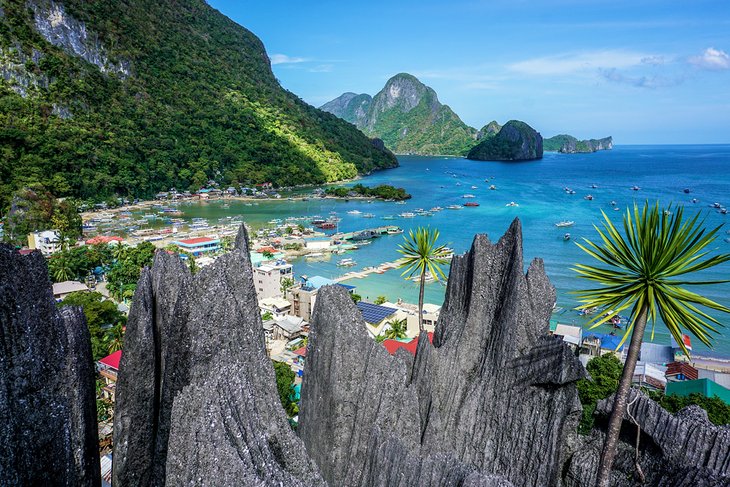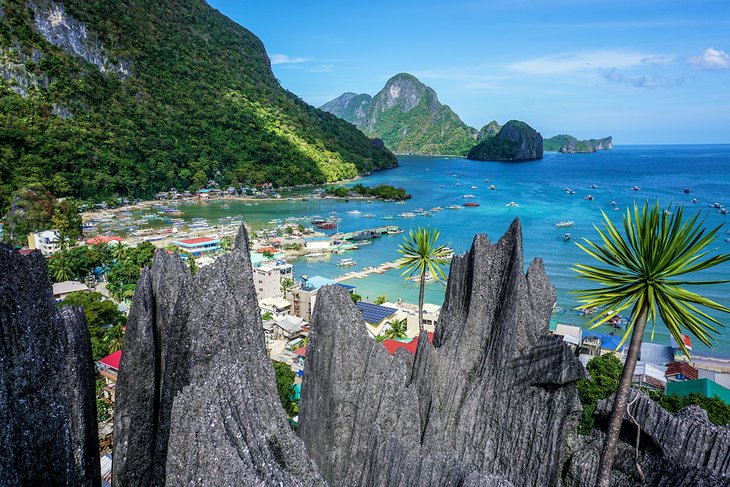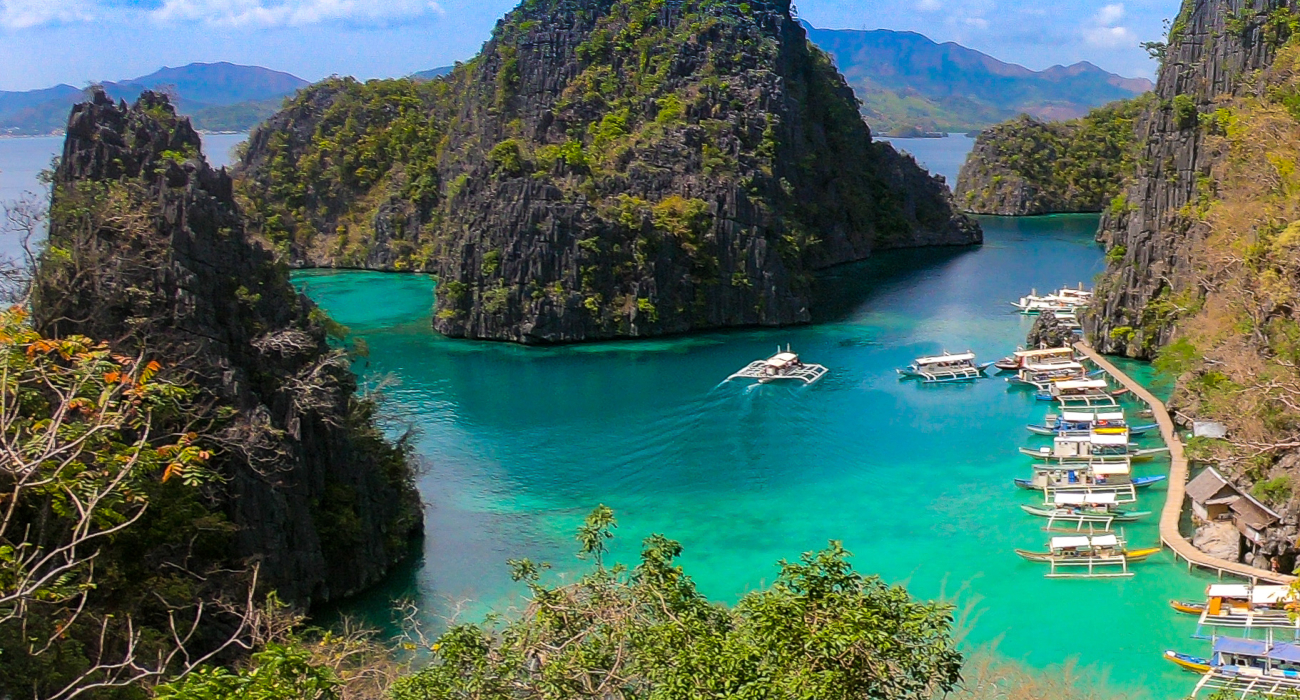
The Philippines, an archipelago of over 7,000 islands nestled in Southeast Asia, is a captivating blend of vibrant culture, breathtaking landscapes, and warm, welcoming people. From pristine beaches and towering volcanoes to bustling cities and ancient rice terraces, the Philippines offers an unparalleled travel experience for every kind of adventurer. This guide delves into the top attractions, explores its rich history, provides practical travel tips, and helps you plan the perfect Philippine getaway.
Top Attractions: A Tapestry of Natural Wonders and Cultural Treasures
The Philippines boasts a diverse array of attractions, each offering a unique perspective on the country’s beauty and heritage. Here are some of the must-visit destinations:

Related Articles about Unveiling the Pearl of the Orient Seas: A Guide to the Philippines’ Top Attractions:
- The Enchanting Tapestry of the Golden City: Your Ultimate Guide to San Francisco
- Beyond the Neon Glow: Discovering South Korea’s Best Hotels and Unforgettable Experiences
- Busan: Where the Mountains Meet the Sea – A Comprehensive Guide to South Korea’s Coastal Gem
- Discovering Madrid: A Guide to the Best Hotels and Experiences in Spain’s Vibrant Capital
- Lombok: A Traveler’s Guide to Paradise Found
1. El Nido, Palawan: Often hailed as the "Last Frontier" of the Philippines, El Nido is a paradise for island hopping and exploration. Towering limestone cliffs rise dramatically from turquoise waters, sheltering hidden lagoons, secret beaches, and vibrant coral reefs.
- Highlights: Island hopping tours A, B, C, and D offer different experiences, from exploring hidden lagoons and snorkeling in vibrant reefs to relaxing on pristine beaches. Kayaking through the Big Lagoon, swimming in the Secret Lagoon, and sunbathing on Nacpan Beach are just a few of the unforgettable activities.
2. Boracay Island: Famous for its powdery white sand and crystal-clear waters, Boracay Island is a world-renowned beach destination. After a period of rehabilitation, Boracay has emerged even more beautiful and sustainable, offering a vibrant nightlife, water sports, and a laid-back island vibe.
- Highlights: Relaxing on White Beach, enjoying a sunset paraw sailing trip, trying various water sports like windsurfing and kitesurfing, and experiencing the lively nightlife along D’Mall.
3. Chocolate Hills, Bohol: This geological wonder consists of over 1,200 symmetrical hills that turn a rich chocolate brown during the dry season. The unique landscape is best viewed from a designated viewing platform, offering panoramic views of the surrounding countryside.

- Highlights: Visiting the Chocolate Hills Adventure Park (CHAP), which offers activities like ziplining and bike riding, taking a river cruise on the Loboc River, and encountering the adorable Philippine tarsiers at the Tarsier Sanctuary.
4. Banaue Rice Terraces, Ifugao: Carved into the mountains of Ifugao over 2,000 years ago, the Banaue Rice Terraces are a UNESCO World Heritage Site and a testament to the ingenuity and perseverance of the indigenous Ifugao people.
- Highlights: Hiking through the rice terraces, visiting the Batad Rice Terraces amphitheater, learning about the Ifugao culture at the Banaue Museum, and experiencing the breathtaking sunrise over the terraces.
5. Vigan City, Ilocos Sur: This charming UNESCO World Heritage City is a preserved Spanish colonial town, showcasing cobblestone streets, ancestral houses, and horse-drawn carriages (kalesas). Walking through Vigan is like stepping back in time.
- Highlights: Strolling along Calle Crisologo, visiting the Syquia Mansion Museum, riding a kalesa through the city, and exploring the pottery and weaving industries.
6. Intramuros, Manila: Known as the "Walled City," Intramuros is a historical district in Manila that was once the seat of Spanish colonial power. Explore the well-preserved fortifications, churches, and museums that offer a glimpse into the Philippines’ colonial past.
- Highlights: Visiting Fort Santiago, exploring San Agustin Church (a UNESCO World Heritage Site), walking along the walls of Intramuros, and learning about the history of the Spanish colonial period at the Casa Manila Museum.
7. Mount Mayon, Albay: With its perfectly symmetrical cone shape, Mount Mayon is an active volcano that dominates the landscape of Albay province. While climbing to the summit is often restricted due to volcanic activity, the views from the base are still breathtaking.
- Highlights: Visiting the Cagsawa Ruins, which are the remains of a church destroyed by a volcanic eruption, taking an ATV tour around the base of the volcano, and enjoying the panoramic views from Ligñon Hill.
8. Cebu City and its surrounding islands: Cebu City, the "Queen City of the South," is a bustling metropolis with a rich history and vibrant culture. It serves as a gateway to numerous stunning islands, each offering unique attractions.
- Highlights: Visiting Magellan’s Cross and the Basilica del Santo Niño, exploring Fort San Pedro, swimming with whale sharks in Oslob, canyoneering in Kawasan Falls, and relaxing on the beaches of Malapascua and Bantayan Island.
9. Siargao Island: Known as the "Surfing Capital of the Philippines," Siargao Island attracts surfers from around the world with its legendary waves, particularly the famous "Cloud 9." However, Siargao offers more than just surfing, with its pristine beaches, lagoons, and laid-back atmosphere.
- Highlights: Surfing at Cloud 9, exploring the Magpupungko Rock Pools, island hopping to Naked Island, Daku Island, and Guyam Island, and relaxing in the Sugba Lagoon.
10. Coron, Palawan: Like El Nido, Coron offers stunning limestone cliffs, turquoise waters, and hidden lagoons. It’s also a popular destination for wreck diving, with numerous Japanese warships sunk during World War II.
- Highlights: Snorkeling and diving in Kayangan Lake, Twin Lagoon, and Barracuda Lake, exploring the Japanese shipwrecks, relaxing on Banana Island and Malcapuya Island, and hiking to the summit of Mount Tapyas for panoramic views.
A Glimpse into History: A Nation Forged in Resilience
The Philippines boasts a rich and complex history, shaped by indigenous cultures, Spanish colonization, American rule, and Japanese occupation. Understanding this history adds depth and context to your travels.
- Pre-Colonial Era: The Philippines was inhabited by various indigenous groups with their own distinct cultures and social structures. Trade with neighboring countries like China and India flourished.
- Spanish Colonization (1521-1898): Ferdinand Magellan claimed the Philippines for Spain in 1521, marking the beginning of over 300 years of Spanish colonial rule. Catholicism became the dominant religion, and Spanish culture heavily influenced the Philippines.
- Philippine Revolution (1896-1898): Fueled by nationalism and a desire for independence, the Philippine Revolution erupted, led by figures like Andres Bonifacio and Emilio Aguinaldo.
- American Colonial Period (1898-1946): After the Spanish-American War, the Philippines was ceded to the United States. American rule brought about significant changes in education, infrastructure, and governance.
- Japanese Occupation (1942-1945): During World War II, the Philippines was occupied by Japan. The occupation was marked by hardship and resistance.
- Independence (1946): The Philippines gained its independence from the United States on July 4, 1946.
Essential Travel Tips for a Smooth Philippine Adventure
Planning your trip to the Philippines requires careful consideration. Here are some essential travel tips:
- Visa Requirements: Check visa requirements based on your nationality. Many nationalities can enter the Philippines visa-free for a certain period.
- Currency: The Philippine Peso (PHP) is the local currency. ATMs are widely available in major cities and tourist destinations. Credit cards are accepted in larger establishments, but cash is often preferred in smaller towns and islands.
- Language: Filipino (Tagalog) and English are the official languages. English is widely spoken, especially in tourist areas.
- Transportation: The Philippines offers a variety of transportation options, including domestic flights, buses, ferries, jeepneys, tricycles, and taxis. Domestic flights are often the most convenient way to travel between islands.
- Safety: The Philippines is generally a safe country for tourists. However, it’s important to be aware of your surroundings and take precautions against petty theft. Avoid traveling to conflict areas in Mindanao.
- Health: Consult your doctor about recommended vaccinations and health precautions. Drink bottled water and avoid eating food from questionable sources.
- Respect Local Customs: The Philippines is a conservative country. Dress modestly when visiting religious sites and be respectful of local customs and traditions.
- Learn Basic Filipino Phrases: Learning a few basic Filipino phrases like "Magandang araw" (Good day) and "Salamat" (Thank you) will be greatly appreciated by locals.
- Bargaining: Bargaining is common in markets and for tricycle fares. Be polite and respectful when negotiating prices.
- Internet Access: Wi-Fi is available in many hotels, restaurants, and cafes. You can also purchase a local SIM card for mobile data.
Accommodation Options: From Budget-Friendly to Luxurious Retreats
The Philippines offers a wide range of accommodation options to suit every budget and preference.
- Budget Hostels and Guesthouses: These are ideal for budget travelers looking for affordable and social accommodations.
- Mid-Range Hotels and Resorts: These offer comfortable rooms, amenities like swimming pools and restaurants, and good value for money.
- Luxury Hotels and Resorts: These provide upscale accommodations, world-class service, and luxurious amenities like spas, private beaches, and fine-dining restaurants.
- Airbnb: Airbnb offers a variety of apartments, villas, and unique accommodations for a more local experience.
Navigating the Islands: Transportation Options
Getting around the Philippines can be an adventure in itself.
- Domestic Flights: The fastest and most convenient way to travel between islands. Major airlines include Philippine Airlines, Cebu Pacific, and AirAsia.
- Ferries: Ferries are a more affordable option for island hopping, but they can be slow and sometimes unreliable.
- Buses: Buses are the primary mode of transportation on the major islands. They are generally affordable but can be crowded and slow.
- Jeepneys: These colorful and iconic vehicles are a unique Philippine experience. They operate on fixed routes within cities and towns.
- Tricycles: These are three-wheeled motorcycles with sidecars, commonly used for short distances in smaller towns.
- Taxis: Taxis are readily available in major cities. Make sure the meter is running or negotiate a fare beforehand.
The Best Time to Visit: Planning Your Perfect Getaway
The best time to visit the Philippines is during the dry season, which runs from November to May. During this period, the weather is generally sunny and dry, making it ideal for outdoor activities and island hopping.
- November to February: This is the coolest and driest time of year, making it the peak tourist season.
- March to May: This is the hottest and driest time of year, perfect for swimming and sunbathing.
- June to October: This is the rainy season, with occasional typhoons. While the weather can be unpredictable, prices are generally lower, and there are fewer tourists.
Conclusion: An Unforgettable Journey Awaits
The Philippines, with its stunning natural beauty, rich cultural heritage, and warm hospitality, is a destination that will captivate your senses and leave you with unforgettable memories. Whether you’re exploring hidden lagoons in Palawan, hiking through ancient rice terraces in Ifugao, or simply relaxing on the pristine beaches of Boracay, the Philippines offers an adventure for every traveler. So, pack your bags, embrace the spirit of adventure, and prepare to be enchanted by the Pearl of the Orient Seas.





